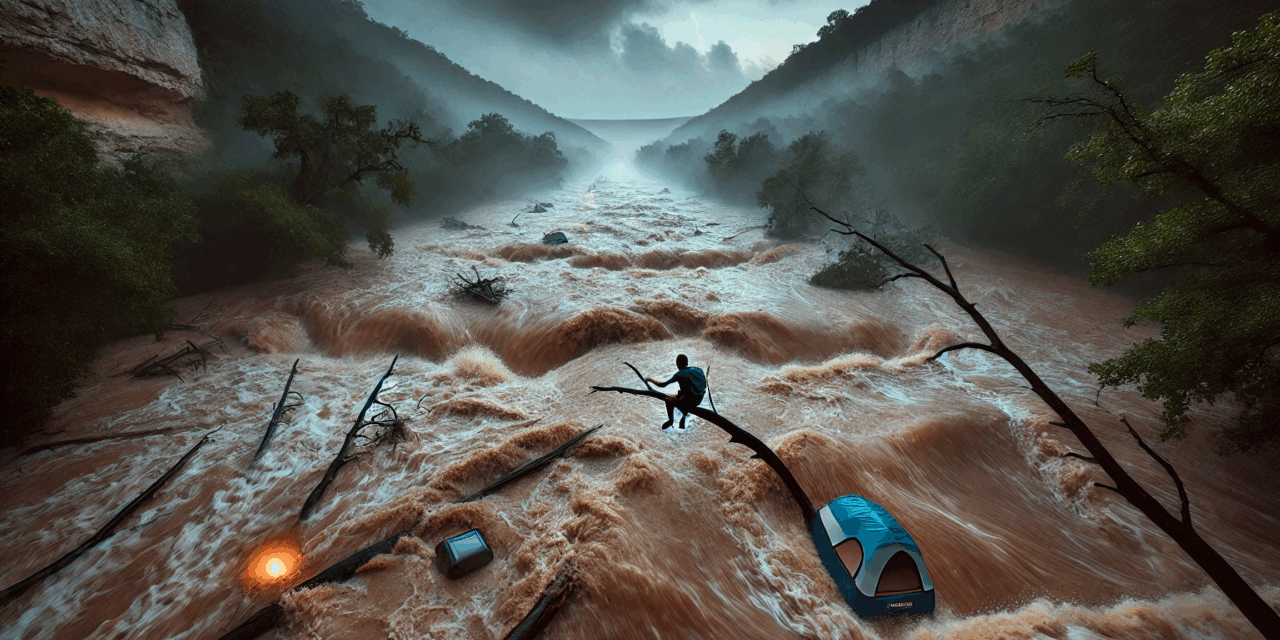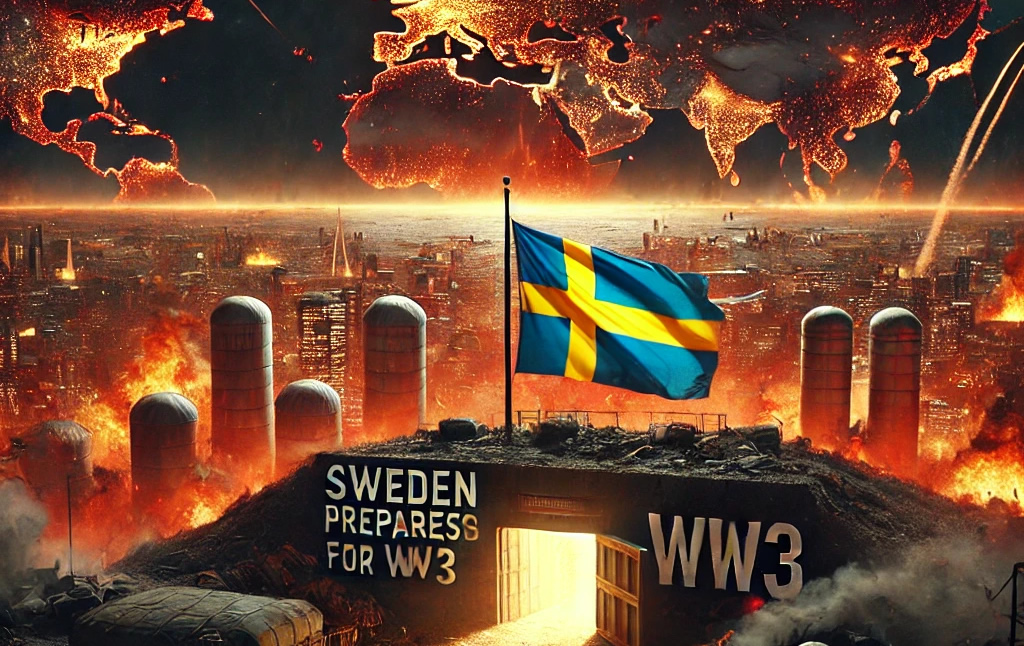The recent catastrophic flooding in Texas Hill Country that claimed over 120 lives serves as a stark reminder that Mother Nature doesn’t care about your politics, your preparedness level, or your proximity to emergency services. When disaster strikes, you’re on your own until help arrives—if it arrives at all.
The tragedy at Camp Mystic, where 27 children and counselors perished in flash flooding, underscores a harsh reality every liberty-minded American must face: our safety is ultimately our own responsibility. Government agencies may issue warnings, but when the water starts rising at 4 AM, it’s your knowledge, your gear, and your decision-making that will determine whether you and your family survive.
The Constitutional Reality of Self-Reliance
Our Founding Fathers understood that individual preparedness wasn’t just advisable—it was essential to maintaining liberty. Thomas Jefferson famously wrote, “The price of freedom is eternal vigilance.” That vigilance extends beyond political threats to natural disasters that can devastate communities faster than any foreign enemy.
Consider this: the National Weather Service issued flood warnings for the Texas Hill Country, but bureaucratic staffing cuts under the current administration may have hampered coordination with local emergency managers. When government fails—whether through incompetence, budget cuts, or simple overwhelm—the prepared patriot survives while others perish.
Vehicle Escape: Your Mobile Fortress Becomes a Death Trap
Let’s start with the most common scenario: you’re in your vehicle when flooding begins. Your truck or SUV, normally a symbol of American independence and mobility, can become a coffin in moving water.
The 12-Inch Rule: Just 12 inches of moving water can carry away a vehicle. Six inches can knock you off your feet. This isn’t theory—it’s physics that doesn’t negotiate.
Essential Vehicle Equipment Every Patriot Should Carry:
Glass Breaker/Seat Belt Cutter: This $15 tool is non-negotiable. The ResQMe or similar spring-loaded models should be within arm’s reach of every seat. When your vehicle is submerged and electrical systems fail, power windows won’t work. You have roughly 30-60 seconds before the vehicle fills with water and equalizes pressure—making doors impossible to open.
Tactical Application: Practice the sequence now, before you need it. Unbuckle seat belt, crack window immediately if possible, then use the glass breaker on the side window (never the windshield—it’s laminated). Exit through the window, not the door.
Emergency Escape Protocol:
- Stay calm and assess: Is the water still rising? Can you drive to higher ground?
- If trapped, act fast: Unbuckle immediately, grab your glass breaker
- Break the side window: Aim for the corners where glass is weakest
- Escape through the window: Don’t try to open doors underwater
- Surface and swim to safety: Always swim with the current, angle toward shore
Tactical Vehicle Preparedness
Your vehicle should be equipped like the mobile command center it needs to become during emergencies.
Power Independence: A 12V emergency solar charger and portable power bank keep communications alive when the grid fails. The Goal Zero Nomad series or similar tactical-grade solar panels can charge phones, radios, and GPS devices indefinitely.
Communication: A hand-crank emergency radio with NOAA Weather Radio capability. When cell towers fail—and they will—radio becomes your lifeline to emergency information.
Navigation: Physical maps of your area stored in waterproof cases. GPS fails when satellites can’t reach your receiver or when your device dies. Paper maps work when technology doesn’t.
Emergency Food Supply: MREs (Meals Ready to Eat) or similar military-grade rations. Three days minimum per person. These aren’t just for long-term disasters—flood victims often wait days for rescue or evacuation.
Home Defense Against Nature’s Assault
Your home is your castle, but castles can flood. The key is layered defense and strategic retreat planning.
Early Warning Systems: A battery-powered NOAA Weather Radio with tone alert function should be in every patriot’s home. These devices receive emergency broadcasts even when power fails, giving you critical minutes or hours to execute your plan.
Emergency Power Strategy:
- Solar Power Banks: Goal Zero Yeti series or similar provides silent, reliable power for communications and critical devices
- Backup Generator: Properly installed with transfer switch to prevent back-feeding the grid
- Manual Tools: Hand-crank flashlights, radios, and phone chargers eliminate battery dependence
Food Security During Floods: Contaminated water supplies and closed roads can cut off food access for weeks. Your emergency food supply should include:
- Freeze-dried meals with 25+ year shelf life
- Canned goods that don’t require heating
- Water purification tablets and portable filters
- Manual can openers (electric ones fail when power goes out)
The Three-Day Reality
FEMA openly admits they can’t reach disaster victims for 72 hours minimum. In major floods, that timeline extends to weeks. The Texas floods proved this once again—some areas remained inaccessible for over a week.
Your 72-Hour Kit Must Include:
- Water: One gallon per person per day minimum
- Food: High-calorie, no-cook options
- First Aid: Include prescription medications
- Shelter: Emergency blankets and tarps
- Tools: Multi-tool, rope, duct tape, plastic sheeting
- Defense: Remember, disasters often bring out the worst in people
Strategic Evacuation Planning
Every patriot needs multiple evacuation routes mapped and practiced. The government’s evacuation routes become death traps when everyone uses them simultaneously.
Route Planning:
- Identify at least three different paths to higher ground
- Avoid low-lying areas, bridges, and flood-prone zones
- Practice these routes with your family
- Have rally points established if family members are separated
Go-Bag Essentials:
- Important documents in waterproof storage
- Cash (ATMs and card readers fail in disasters)
- Emergency contact information
- Copies of identification
- Photos of family members for identification purposes
Constitutional Considerations During Disasters
History shows that disasters often trigger government overreach. During Hurricane Katrina, authorities confiscated legally owned firearms from law-abiding citizens, leaving them defenseless against looters and criminals.
Know Your Rights:
- The Second Amendment doesn’t have a disaster exception
- Document any rights violations with photos/video when safe to do so
- Understand your state’s emergency powers laws
- Have legal contacts ready
Community Resilience: Patriots understand that strong communities survive disasters better than individuals. Build relationships with like-minded neighbors now, before you need them. Share skills, resources, and planning. A prepared neighborhood is safer than a prepared house surrounded by chaos.
The Harsh Truth About Government Response
The Texas floods revealed familiar patterns: bureaucratic delays, communication failures, and resource shortages. The National Weather Service, hobbled by budget cuts and staffing shortages, struggled to coordinate warnings effectively.
This isn’t criticism of first responders—these are good people doing dangerous work. This is recognition that government systems have inherent limitations that become deadly during major disasters.
Reality Check:
- Emergency services will be overwhelmed
- Communication systems will fail
- Supply chains will break down
- Help will be slow and limited
Building Antifragile Resilience
True patriots don’t just prepare for disasters—they build systems that get stronger under stress. This means redundancy in everything: power, water, food, communication, and transportation.
Power Redundancy: Solar, generator, battery banks, and manual backups Water Security: Storage, purification, and multiple sources Food Independence: Long-term storage, gardening, and preservation skills Communication: Multiple radios, satellite communicators, and signal methods Transportation: Multiple vehicles, bicycles, and walking routes planned
The Moral Imperative of Preparedness
Preparedness isn’t selfish—it’s patriotic. Every person who can care for themselves during a disaster frees up resources for those who truly need help: the elderly, disabled, and children. Your self-reliance makes your community stronger.
Moreover, prepared citizens maintain liberty during crises. Dependent populations accept any conditions for safety. Self-reliant patriots preserve freedom even under duress.
Training and Practice: The Difference Between Life and Death
Gear without training is just expensive junk. The Camp Mystic security guard who saved children knew what to do because he had experience and training. He didn’t panic; he acted.
Essential Skills Every Patriot Should Master:
- Swift water rescue techniques
- First aid and trauma medical care
- Radio operation and emergency communication protocols
- Vehicle escape procedures
- Navigation without GPS
- Water purification methods
- Food preservation and cooking without power
Regular Drills:
- Practice evacuation routes monthly
- Test all emergency equipment quarterly
- Conduct communications checks with your network
- Review and update plans annually
The Bottom Line: Liberty Through Preparedness
The Texas floods killed over 120 Americans who woke up expecting a normal July 4th weekend. Instead, they faced a wall of water that turned a peaceful river into a killing machine in minutes.
Government failed them. Not through malice, but through the inherent limitations of centralized systems trying to manage unpredictable disasters across vast territories with limited resources.
Your survival depends on your preparedness, your training, and your willingness to act when others freeze. This isn’t paranoia—it’s prudence. It’s the same mindset that built America: self-reliant citizens who take responsibility for their own safety and the safety of their families.
The Founders who signed the Declaration of Independence knew they were risking everything on their own preparation and resolve. They didn’t wait for permission or help from authority. They took responsibility and acted.
When the waters rise in your area—and eventually, they will—will you be ready? Will your family survive because you prepared, or will you become another statistic, another reminder that disasters don’t wait for government permission to strike?
The choice is yours. Choose preparedness. Choose self-reliance. Choose liberty through personal responsibility.
Because when the water starts rising at 4 AM, the only person who can save you is you.





